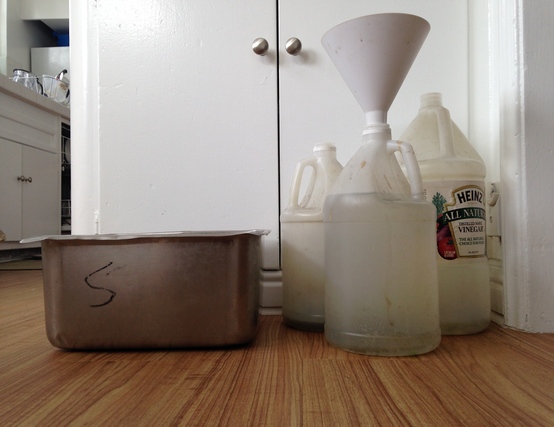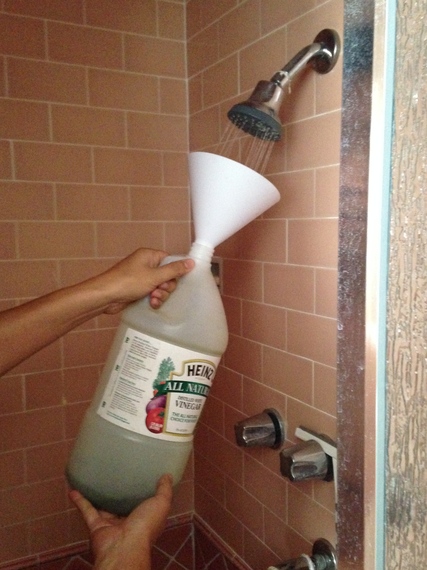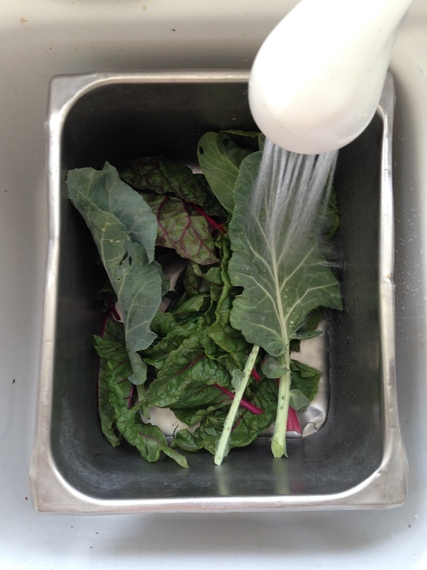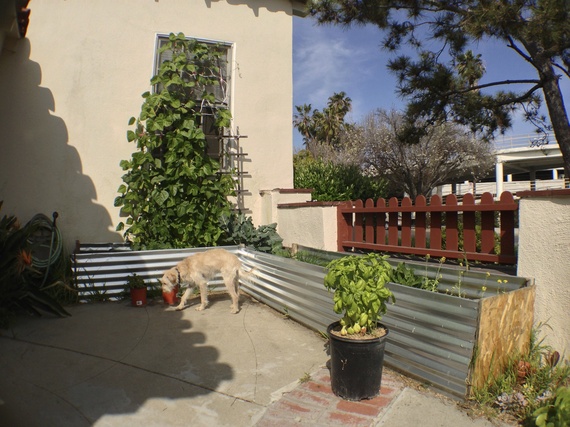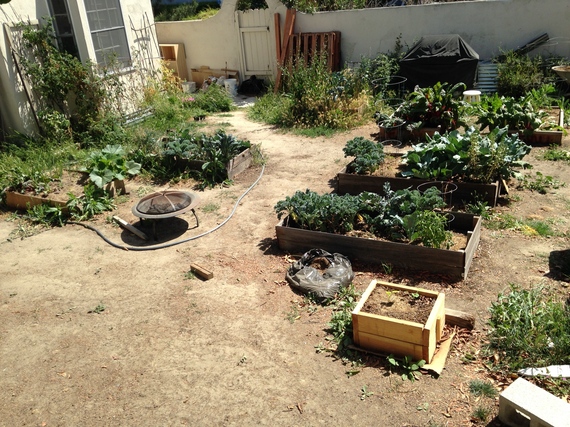I currently live in Los Angeles and have lived in California for most of my life, so I'm used to living with drought. I still remember as a small kid when my mom explained to me that I would now be taking showers instead of baths due to a lack of rain, embedding in me the idea that changing personal habits is a necessary and expected response to scarcity. However, one thing I'm loathe to give up today is my garden, where I grow roughly 80 percent of my produce. Gardening is one of the great joys in my life, particularly since it addresses practically every topic I care deeply about -- environmentalism, health, sustainability, connection to the land, and anti-corporatism to name a few. I find it relaxing, meditative, and endlessly fascinating, and I'm not willing to give it up.
The drought currently gripping California is the worst in the state's recorded history, and even though water rates haven't gone up (as they should), I still wanted to find ways to compensate for the water that goes into my garden. So I began looking for ways to offset my garden water usage, and to my surprise, found a simple way to provide nearly 100 percent of the water I need for my garden using water that would otherwise go to waste. What's more, it doesn't require installing a greywater system or any complicated or expensive equipment.
All I needed were bottles, bins, and funnels, and that's all I need to garden in an historic drought without guilt, the usage of additional water, or a higher water bill. Even more surprising is that I hardly had to change my behavior at all to accomplish this. Could it really be so easy?
I looked at all the times when the most water went down the drain in my house, and found that the three most common points were at the shower, the kitchen sink, and the toilet. Other than reducing my flushes and using a low-flow model, there wasn't much water savings to be found at the toilet, so I went at the shower and kitchen sink with my bottles, bins, and funnels -- and in the process learned a lot more about how I use (and waste) water.
When I turn on the water to take a shower, it takes a good while for the water to heat up. So instead of just letting this water go down the drain, I collected it using a bottle and a funnel and learned that I was wasting roughly 1.33 gallons of water every time I showered. Conveniently, 1.33 gallons is also the size of a large bottle for white vinegar, and a friend of mine who works at a middle school had plenty of 1- and 1.33-gallon bottles to donate.
Next was the kitchen sink. I use vegetables every day to make my morning smoothie and usually cook vegetables or make a salad every day or two. Organic gardening (as I do) requires a lot of thorough washing, especially since a lot of insects can hide on the underside of leaves, which means a lot of water down the drain. So I bought a smaller metal bin from a hotel's going-out-of-business sale ($5) for small washes and a large food-safe plastic bin for bigger bunches at a kitchen store for $14 (where I also bought my funnel for $3) and collected the water I would otherwise waste when washing my veggies.
From this, I learned that I use roughly .75 gallons of water to wash a morning's worth of smoothie greens. If I'm washing greens for sautéing or salad, I can easily use 2-3 gallons of water to wash them, and even more if I'm cooking for more than one person. This captured wash water would then be poured into bottles or a 5-gallon bucket ($3 at Home Depot) if the bottles were full.
As you could guess, the water quickly began to accumulate. So with my bottles full, I grabbed my watering can to see how much water I needed to give my garden a decent soak, which I had never measured before.
My front courtyard has an L-shaped planter box and a smaller rectangular one, comprising roughly 40 square feet of gardening space. Using my bottles to measure, I learned that I needed roughly 1.5 gallons to irrigate these boxes. The backyard garden -- with about 120 square feet of planter boxes -- needs roughly 5-6 gallons. Currently, I water my plants every 2-3 days, depending on conditions.
Yes, 7.5 gallons is a lot of water, especially in a drought. But if you look at the water I save at the shower and at the kitchen sink, I can easily capture more than 4 gallons per day simply by collecting water that would be wasted in the process of washing my veggies and myself. Put another way, it takes me less than two days to save enough water to grow more vegetables than I can eat using only simple, inexpensive items and without making any significant changes to my behavior.
I find that to be an incredibly powerful and empowering idea.
When it comes to this country's environmental and conservation problems, a lot of people pin their hopes to some not-yet-existing future technology or bemoan the fact that they don't have the money to pay for or have the ability to install an existing technology like greywater or rainwater collection systems. But this ignores the fact that dramatic results can be easily achieved through reduction, some added conscientiousness, and some cheap off-the-shelf items.
Yes, there's certainly more I can do, and I'm sure my water-reducing percentages will drop a lot when the weather gets hotter and I'll need to use more water more often. When it comes to environmentalism, I feel that many people take the position that if they can't completely eliminate a wasteful behavior and/or save the world solely through their own actions, it's not worth making any changes at all towards sustainability. But even if warmer weather and more frequent watering means I can only provide 50 percent of my irrigation water through conservation, that's still a huge victory.
The methods I'm using to save water during this historic drought aren't at all original and are very far from being revolutionary. But the fact that washing my vegetables and myself easily provides the majority of the water I need to grow all the healthiest, tastiest, freshest vegetables I can eat -- with plenty more to give to friends -- sure feels like it.
Follow more of my gardening and sustainability adventures on YouShouldBeGardening.com.
If you have any other simple ways to save water, please share them in the comments section.
